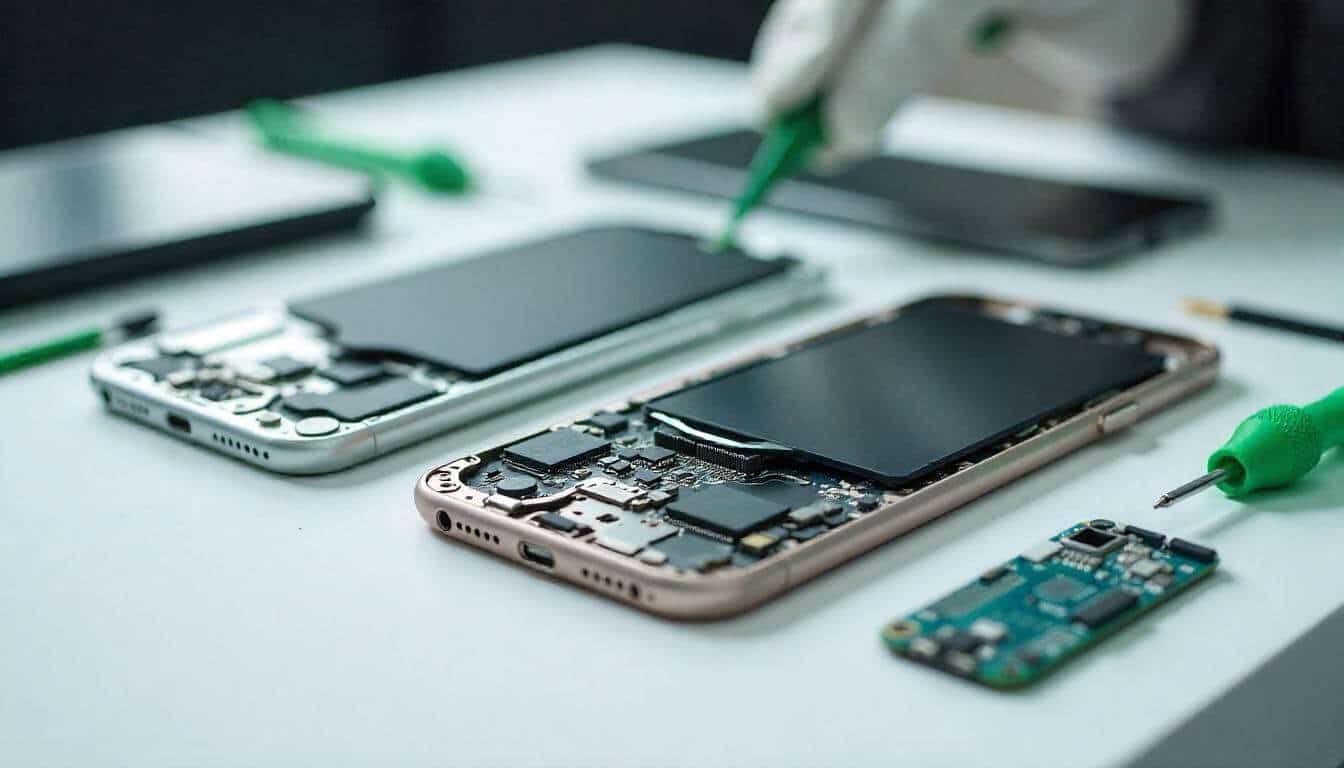Fix It Fast: What Your Phone Repair Site Needs
In today’s digital-first world, your mobile phone repair business lives online as much as it does in the shop. A sleek, user-friendly website can not only bring in more customers but also establish your credibility as the go-to phone repair expert in your area. But what should you include on your phone repair website to make it truly effective?
In this post, we’ll walk you through everything your repair site needs—step by step—so you can fix it fast and start converting visitors into loyal customers.
Why a Great Phone Repair Website Matters
Think about it: when someone’s phone breaks, they don’t want to spend hours searching for a repair shop. They want clear information, trust signals, and easy ways to get in touch. A well-designed website does exactly that.
Here’s why investing in the right website features matters:
-
Builds Trust: Your website is often the first impression potential customers get.
-
Drives Conversions: A site with clear calls-to-action encourages users to book services or visit your shop.
-
Saves Time: FAQ sections, service details, and pricing reduce repetitive calls and messages.
-
Boosts SEO: Optimized pages help local customers find your business online.
Now let’s break down exactly what your phone repair site needs.
Step-by-Step Guide: What Your Phone Repair Site Needs
1. Clear, User-Friendly Homepage
Your homepage is the digital front door to your business. It should:

-
Highlight Services Quickly: A visitor should instantly know you repair phones, tablets, or accessories.
-
Include a Strong Call-to-Action (CTA): Phrases like “Book Your Repair Now” or “Get a Free Quote” guide users.
-
Show Trust Signals: Display certifications, awards, or partner brands.
Pro Tip: Keep your homepage clean and mobile-friendly. Most people will visit your website from their phones, and a clunky mobile site can cost you customers.
2. Detailed Services Page
A services page should outline exactly what you repair. Include:
-
Screen replacements
-
Battery swaps
-
Water damage repairs
-
Charging port fixes
-
Software troubleshooting
Each service should have a brief description, pricing, and turnaround time if possible. Consider adding an FAQ section specific to each service—for example, “How long will my screen replacement take?”
3. Transparent Pricing
Nothing frustrates customers more than hidden fees. On your website:
-
Offer starting prices for common repairs.
-
Clarify any diagnostic fees or special conditions.
-
Consider including price ranges for less predictable repairs.
Transparency builds trust and reduces the likelihood of customers calling competitors.
4. Online Booking or Quote Forms
Convenience is key. Let your visitors schedule repairs without picking up the phone. Features to consider:
-
Online booking forms with date/time selection
-
Quote request forms for custom repairs
-
Integration with calendar tools to prevent double bookings
Pro Tip: Use a simple, minimal form—name, contact info, device type, and issue. Long forms scare users away.
5. Contact Information & Location
Make it impossible for customers to miss your contact info:

-
Display your phone number and email at the top of every page.
-
Include your address with a Google Maps embed.
-
List business hours clearly.
For multi-location shops, consider a dedicated “Locations” page with individual details for each branch.
6. Customer Reviews and Testimonials
Social proof is a powerful driver. Feature:
-
Star ratings and reviews from Google, Yelp, or Facebook
-
Short quotes from satisfied customers
-
Before-and-after photos of repaired devices
Tip: Encourage customers to leave reviews by sending a follow-up email after a repair.
7. FAQ Section
Anticipate questions and provide answers clearly. Common questions include:
-
“Is there a warranty on repairs?”
-
“Can you recover data from a broken phone?”
-
“Do you use OEM or aftermarket parts?”
An FAQ not only helps customers but also boosts SEO by targeting long-tail search queries.
8. Blog for SEO and Authority
A blog can attract new customers and establish your expertise. Post topics like:
-
“Signs Your Phone Needs a Battery Replacement”
-
“How to Protect Your Screen From Cracks”
-
“DIY vs. Professional Phone Repairs”
Blogging regularly improves search engine visibility and keeps your site fresh.
9. Mobile Optimization
It may seem obvious, but many repair websites are not mobile-friendly. Make sure your site:
-
Loads quickly on all devices
-
Has readable fonts and buttons
-
Maintains easy navigation on small screens
Google prioritizes mobile-friendly sites in search results—so optimization is crucial.
10. Security & Trust Features
Customers need reassurance that your site is safe. Include:
-
SSL Certificate (HTTPS): Shows your site is secure
-
Privacy Policy: Explains how you handle customer data
-
Warranty & Guarantee Information: Shows confidence in your work
Security features build trust and improve your SEO ranking.
Bonus Tips for a Winning Phone Repair Website
-
High-quality visuals: Use crisp images of your shop, staff, and repairs.
-
Fast loading speeds: Slow sites lose customers. Use compressed images and efficient code.
-
Clear branding: Your logo, colors, and messaging should reflect professionalism.
-
Local SEO: Include your city or region on pages to attract nearby customers.
FAQs About Phone Repair Websites
Q1: How much should I spend on a phone repair website?
A: Costs vary depending on whether you use a template or custom design. Aim for a site that looks professional, loads fast, and includes essential pages—it’s worth investing in quality.
Q2: Do I need to write my own website content?
A: You can, but professional copywriters or SEO specialists can help make your site more persuasive and searchable.
Q3: How can I improve my site’s visibility online?
A: Focus on local SEO, regularly update your blog, and encourage customer reviews on Google My Business.
Q4: Should I include pricing on my website?
A: Yes—transparent pricing builds trust. You can list starting prices or ranges if exact costs vary.
Q5: How often should I update my website?
A: Keep content current—update services, pricing, hours, and blog posts regularly. A fresh website ranks better and keeps customers informed.
Final Thoughts
A fast, functional, and trustworthy website is one of the most important tools for a phone repair business. By including a clear homepage, detailed service pages, transparent pricing, online booking, contact info, reviews, FAQs, and a blog, you’ll give your customers everything they need to choose your shop confidently.
Remember: your website isn’t just a digital brochure—it’s a conversion engine that helps you get more repairs, faster. Follow this guide, and you’ll be well on your way to a site that not only looks professional but works hard to grow your business.
So don’t wait—fix it fast and build a phone repair website that converts visitors into loyal customers today!





